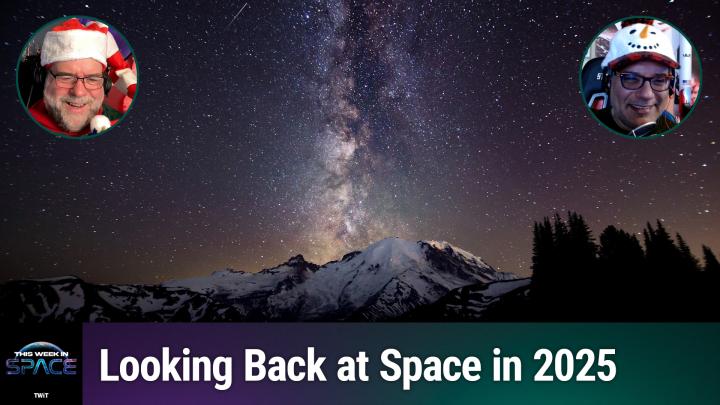Despite Budget Concerns, Europe May Solicit New Space Science Missions
Managers of Europe's space-science program will decide thismonth whether financial prudence or program ambition should be driving themission-selection schedule.
Scheduled to meet Feb. 22, Europe's Science ProgramCommittee (SPC) specifically will decide whether to begin the process ofselecting two new missions costing a combined 950 million euros ($1.2 billion)on the assumption that 200 million euros in savings can be found among missionscurrently operating or planned.
The driving force for those who favor starting new missionsis the concern among space scientists who say the European Space Agency (ESA)cannot afford to go several years without soliciting new ideas from the sciencecommunity, even if the agency's existing program is already stretched to itsfinancial limits.
The issue has sparked occasionally sharp debate between ESA'sscience directorate, led by David Southwood, and the Science Program Committee,currently headed by Genevieve Debouzy, deputy director for strategy andprograms at the French space agency, CNES.
ESA's science budget is about 400 million euros per year andis funded by mandatory contributions from ESA member governments based on grossdomestic product.
The SPC had planned to begin the process of selecting onenew medium-class mission and one larger mission in 2006, with launches to occurin 2015 or 2016. Medium missions have a cost ceiling of 300 million euros.Large missions' cost ceiling is 650 million euros.
ESA's science directorate successfully delayed the call fornew missions, citing financial uncertainties in the current program. Programofficials also noted that in the past two decades, most ESA space-sciencebudget problems were caused by events outside ESA's control, including launcherdelays, missed instrument-delivery deadlines by ESA member nations, andschedule switches by ESA partners including NASA.
Breaking space news, the latest updates on rocket launches, skywatching events and more!
To these concerns have been added the likely cost increasesin two programs already approved: the ESA contribution to NASA's James WebbSpace Telescope, and unanticipated new charges for the 2009 Lisa Pathfindertechnology-demonstration mission in 2009. The Pathfinder mission is intended topave the way for the ESA-NASA Lisa mission to detect gravity waves around 2015.
Despite lingering doubts, the SPC at its Feb. 22 meeting isexpected to agree to issue an announcement of opportunity for new missions.
What has changed in recent months is that ESA's Herschel andPlanck satellites have progressed with no new budget overruns. In addition, ESAscience managers say they have found 200 million euros in savings that providesufficient breathing room to permit new missions to be considered.
Skeptics remain. Some think the 200 million euros in savingswill not be realized, others think 200 million will not be enough toaccommodate the new programs.
ESA Science Projects Director Jacques Louet said Feb. 1 thatthe savings estimate is realistic, and that the schedule for starting newprograms is stretched out enough so that, in the event of a financial problem,the new missions could be stopped in their tracks in time to prevent a budgetcatastrophe.
"There are protections built into the schedule so we canstop the call for programs in time," Louet told reporters during a visit to thePlanck science satellite, being readied for a mid-2008 launch.
The SPC will be asked to approve the new program selectionbased on the following cost-saving scenario.
Sixty percent of the 200 million euros in savings come fromreducing the cost to ESA of the Solar Orbiter mission, tentatively scheduledfor launch in 2015, to 300 million euros from the current 420 million euros.
The savings come mainly from making Solar Orbiter a part ofNASA's Living With a Star Sentinels solar-science mission. No NASA-ESAagreement has been concluded, but ESA officials propose that NASA build threeSentinels spacecraft instead of four, with Solar Orbiter standing in as thefourth, carrying U.S. instruments as well as most of the instruments ESA hadintended.
Under this plan, Solar Orbiter would be launched with thethree Sentinels aboard a single Atlas 5 rocket financed by NASA.
Louet said that if the SPC accepts the proposal, ESA plansto negotiate a memorandum of agreement with NASA by November. ESA then wouldhave about 18 months before making sizable financial commitments -- time enoughto cancel Solar Orbiter if the NASA collaboration falls through.
An additional 60 million euros in savings will come fromreduced operations and mission-extension costs of several satellites currentlyin orbit. Chief among these are the X-Ray Multi-Mirror satellite and Integralastronomy satellites. But operating expenses for the Mars Express and VenusExpress missions also would be reduced.
The final 20-million-euro increment would be found byreducing ESA's internal costs, including expenses for the use of ESA centers,ESA staff and outside contractors.
The method used to assign ESA's overhead andfield-center-operations charges to different agency directorates and programsis complicated and cannot easily be ratcheted up or down by individualdirectorates.
Louet said the science directorate will need the endorsementof ESA Director-General Jean-Jacques Dordain before it can forecast suchsavings with confidence.

Charles Q. Choi is a contributing writer for Space.com and Live Science. He covers all things human origins and astronomy as well as physics, animals and general science topics. Charles has a Master of Arts degree from the University of Missouri-Columbia, School of Journalism and a Bachelor of Arts degree from the University of South Florida. Charles has visited every continent on Earth, drinking rancid yak butter tea in Lhasa, snorkeling with sea lions in the Galapagos and even climbing an iceberg in Antarctica. Visit him at http://www.sciwriter.us
